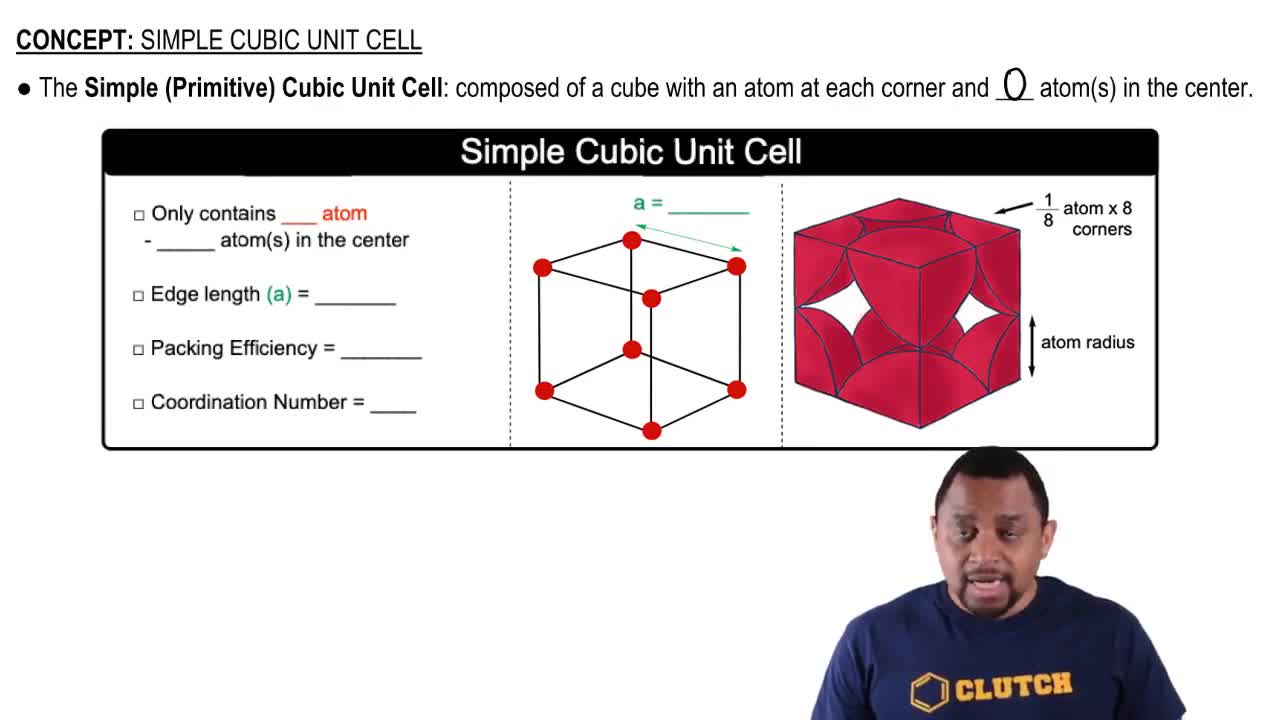Textbook Question
Tausonite, a mineral composed of Sr, O, and Ti, has the cubic unit cell shown in the drawing. (a) What is the empirical formula of this mineral?
755
views
 Verified step by step guidance
Verified step by step guidance



Tausonite, a mineral composed of Sr, O, and Ti, has the cubic unit cell shown in the drawing. (a) What is the empirical formula of this mineral?
A particular form of cinnabar (HgS) adopts the zinc blende structure. The length of the unit cell edge is 5.852 Å. (c) Which of the two substances has the higher density? How do you account for the difference in densities?
CuI, CsI, and NaI each adopt a different type of structure. The three different structures are those shown in Figure 12.26. (a) Use ionic radii, Cs+ 1r = 1.81 A 2, Na+ 1r = 1.16 A 2, Cu+ 1r = 0.74 A 2, and, I- 1r = 2.06 A 2, to predict which compound will crystallize with which structure.